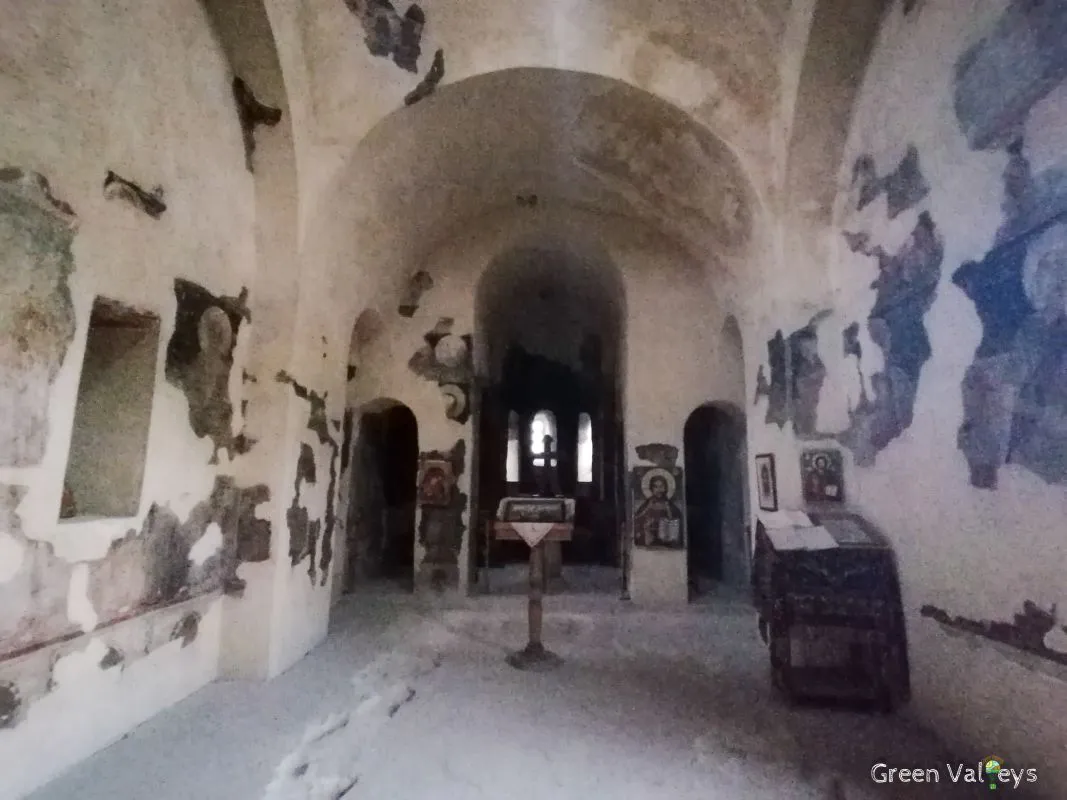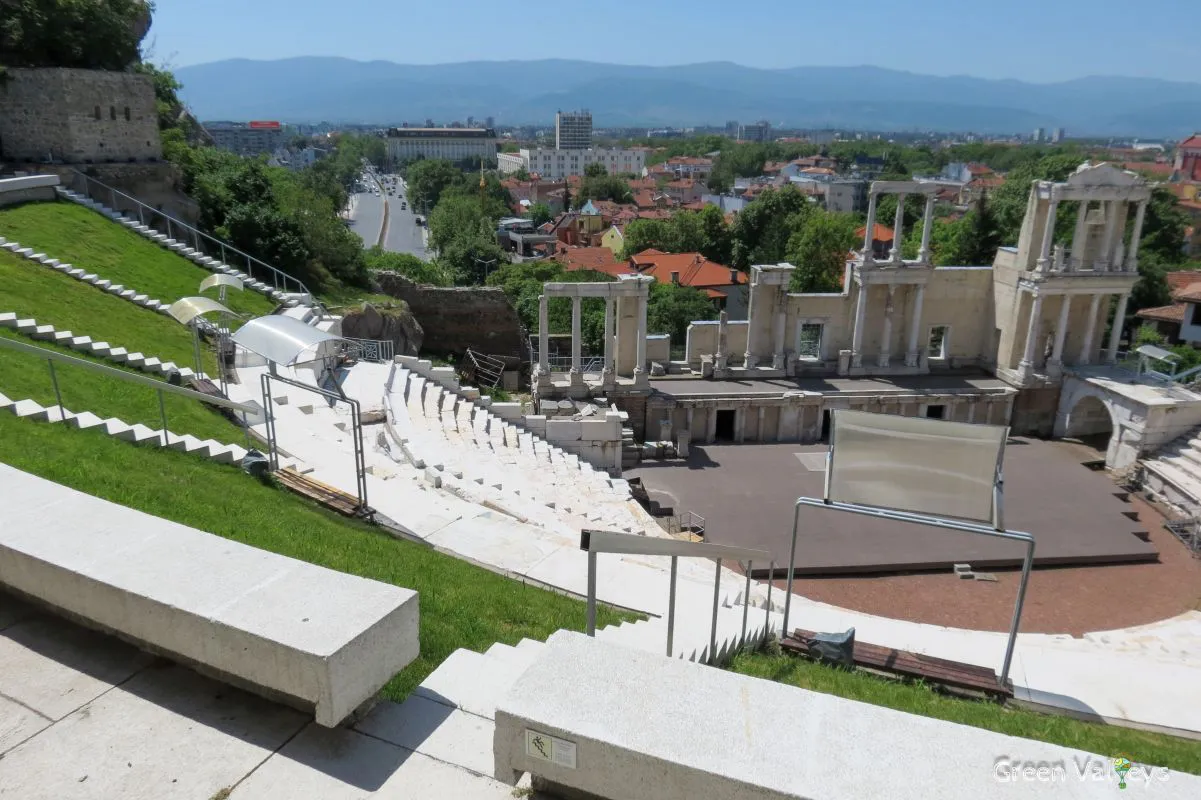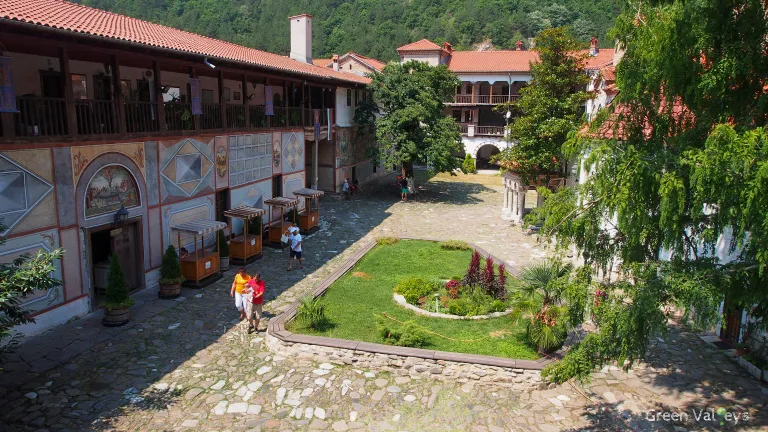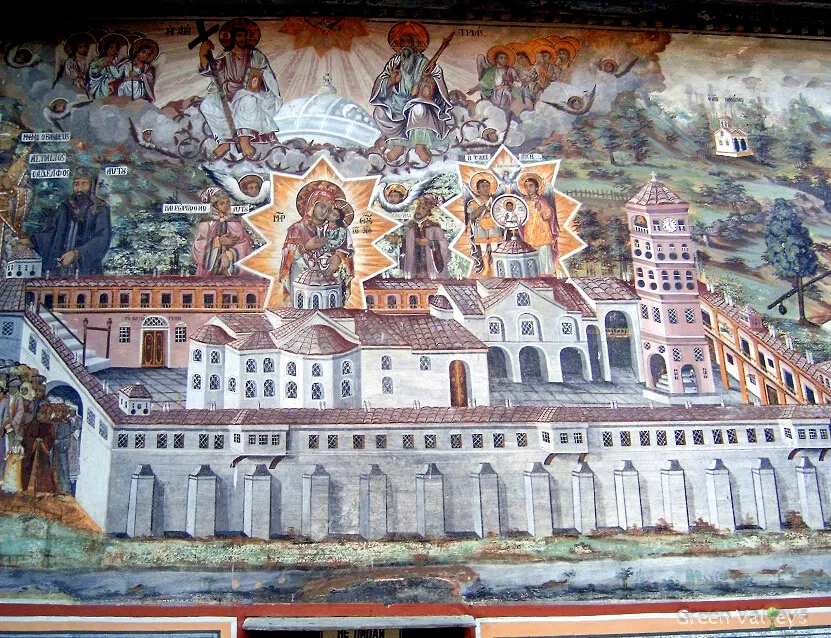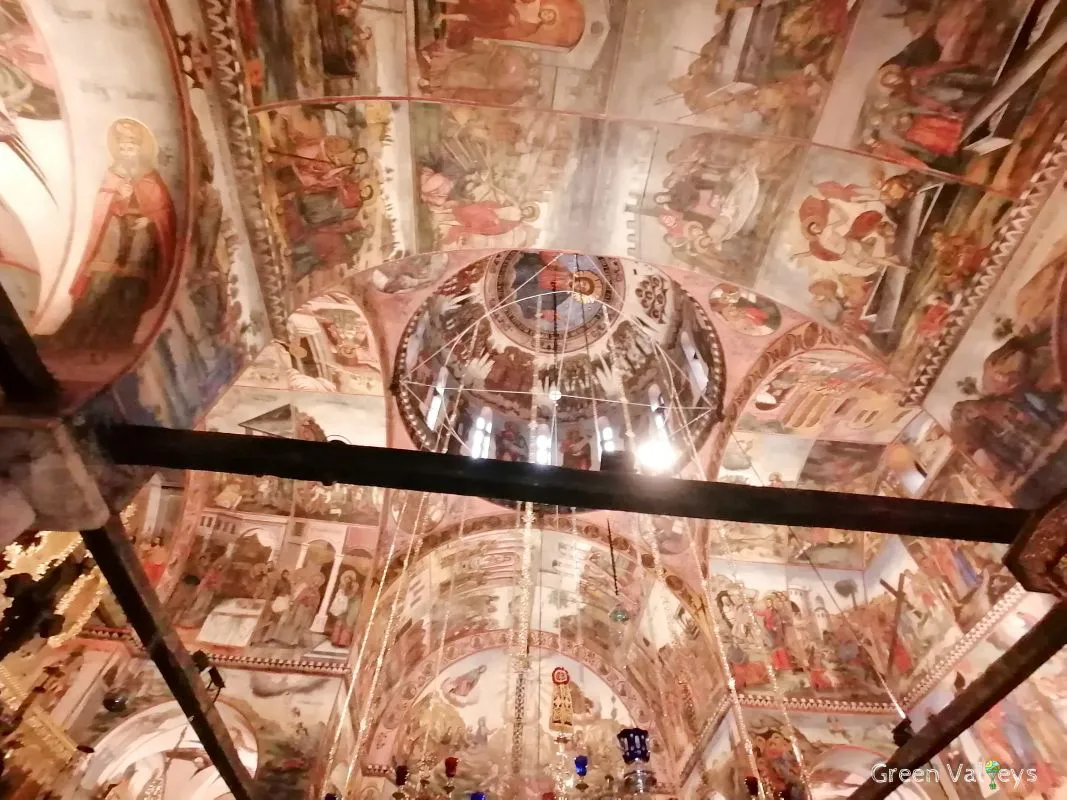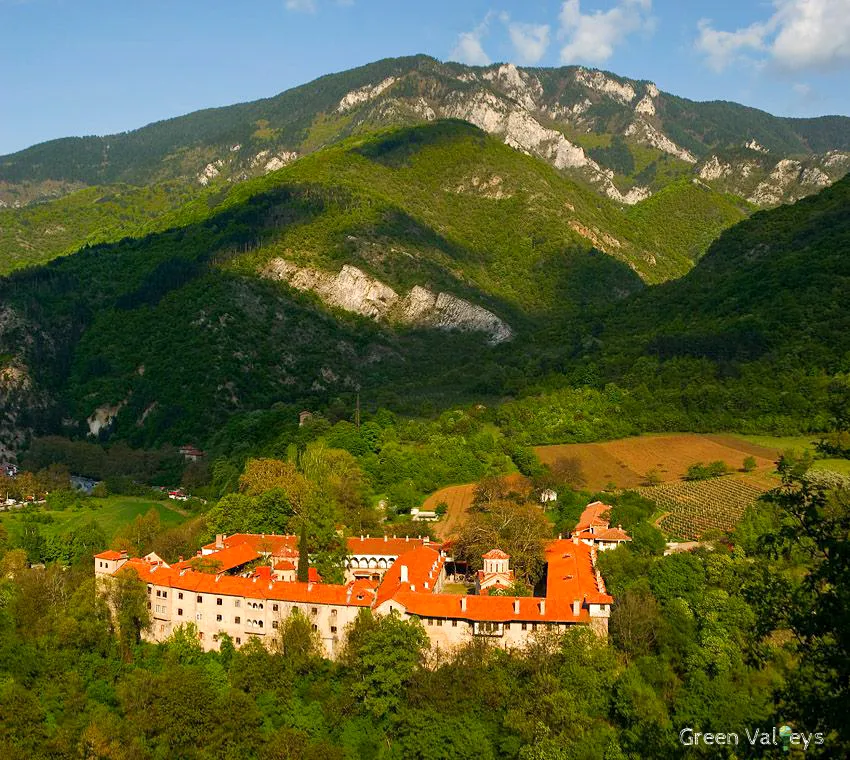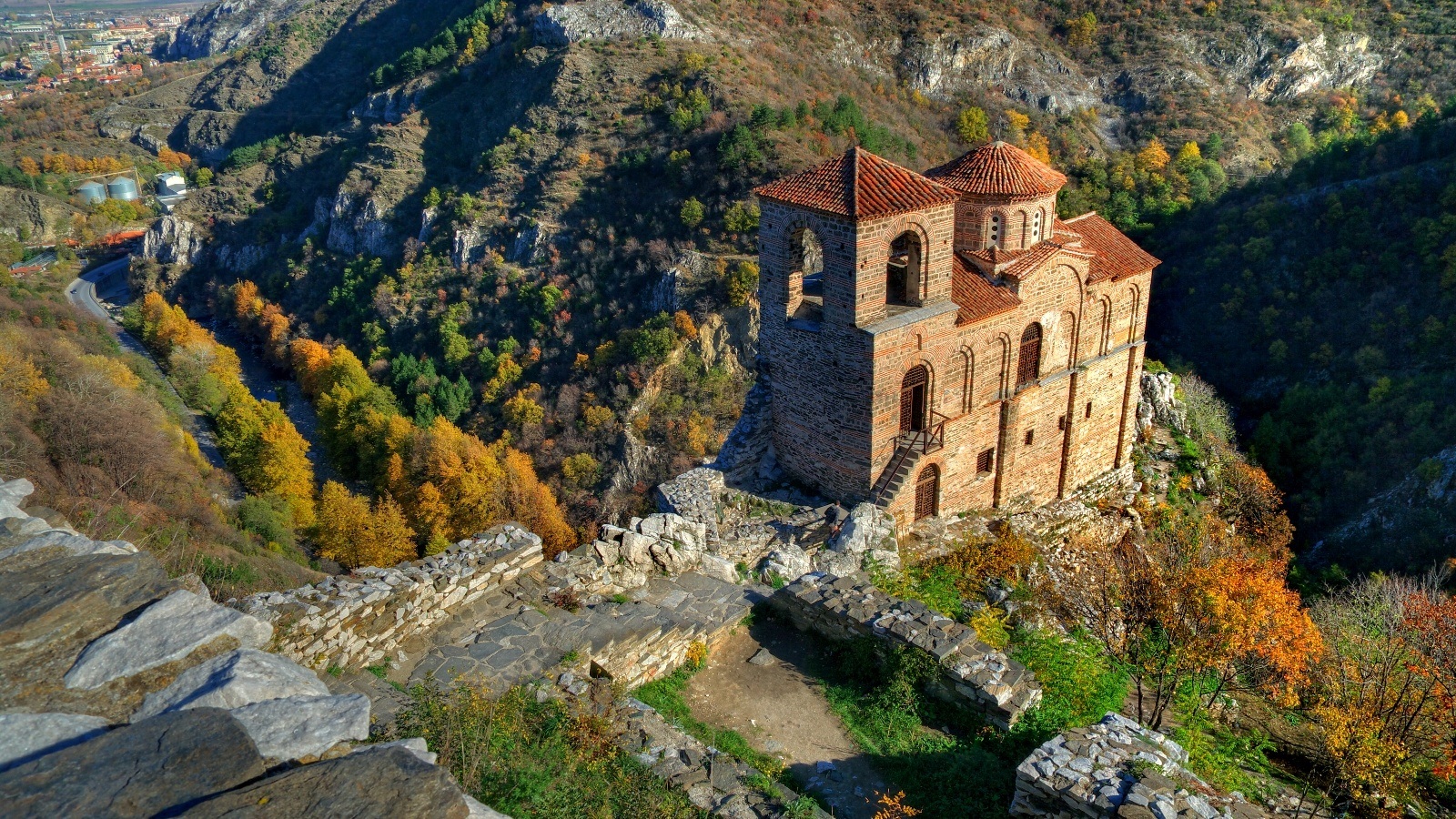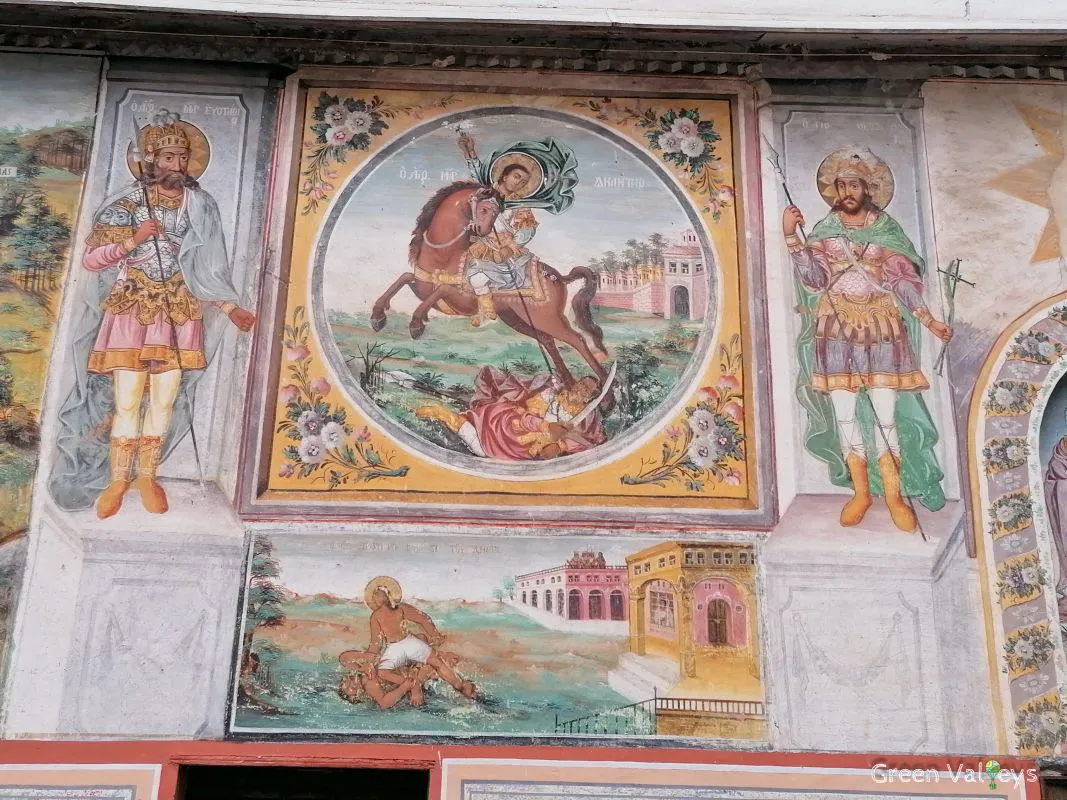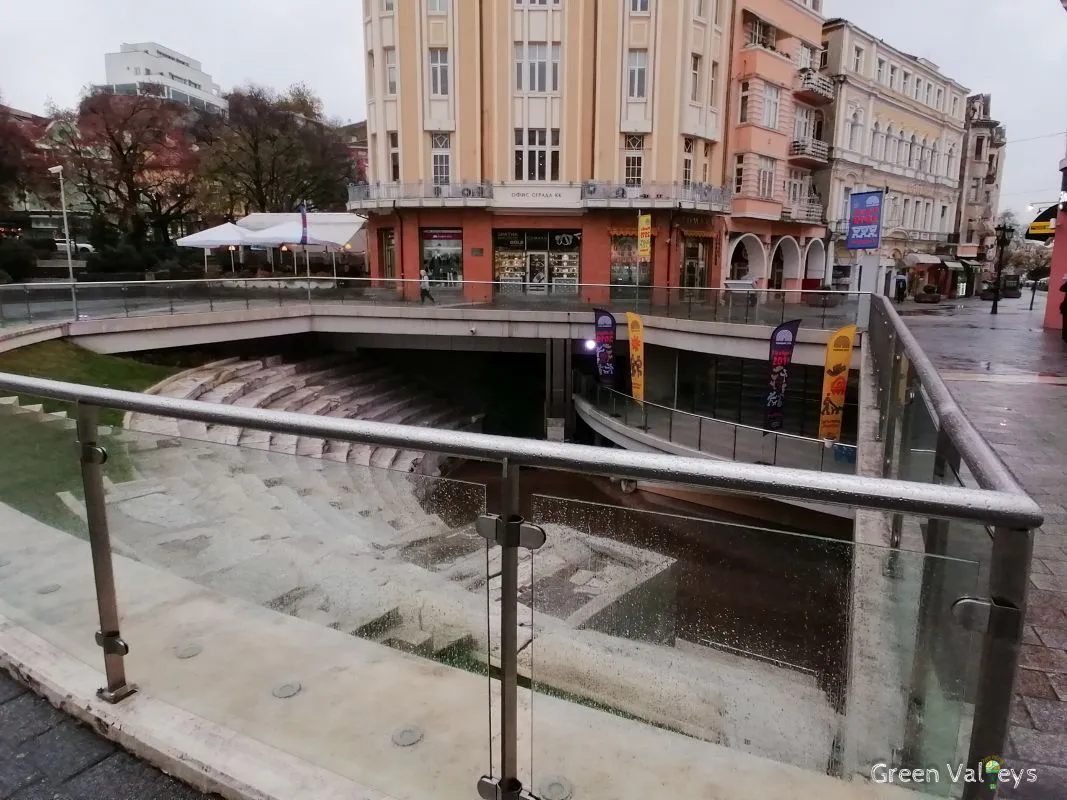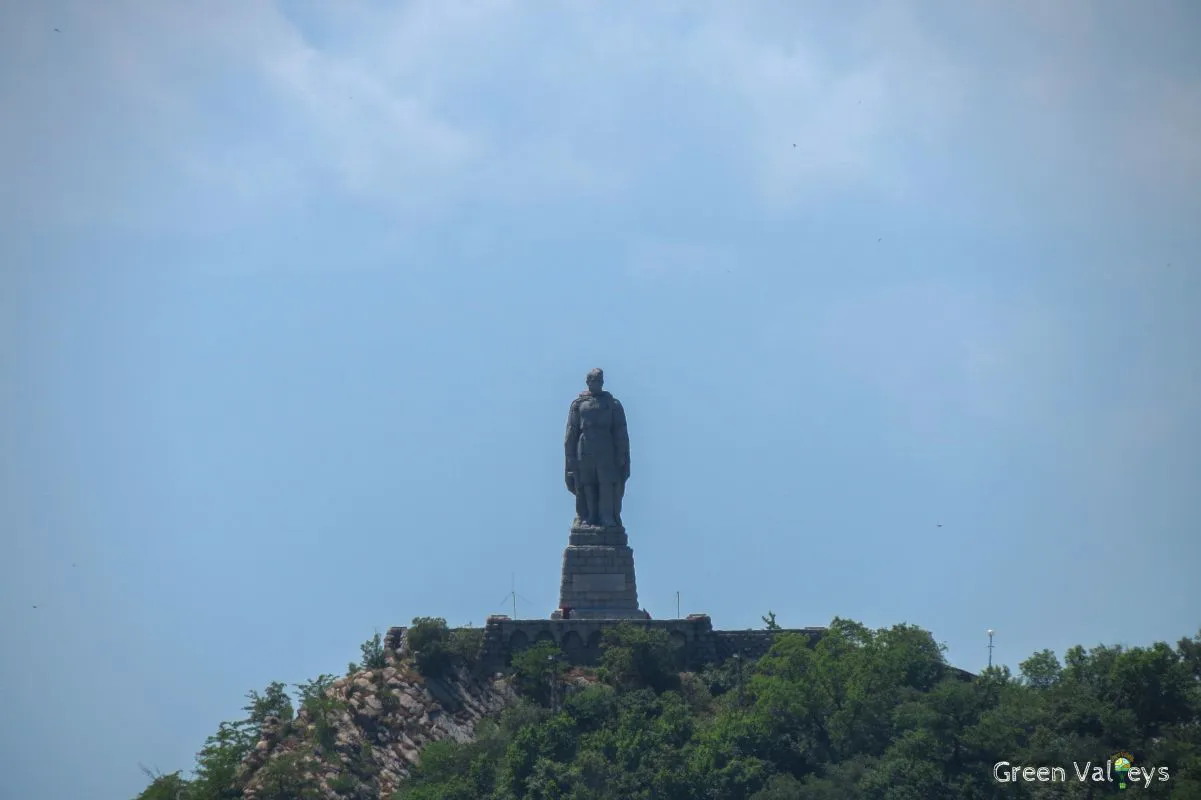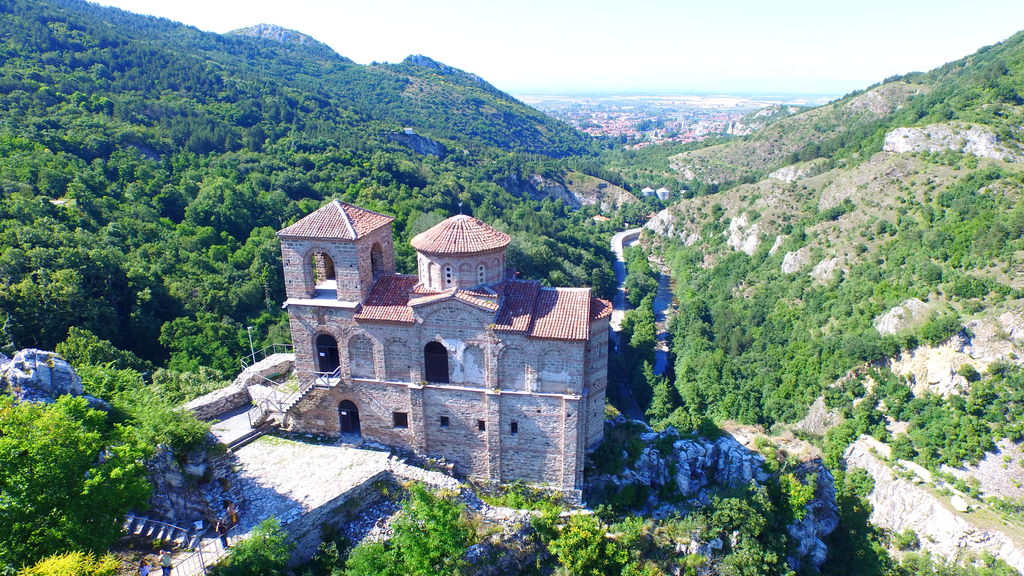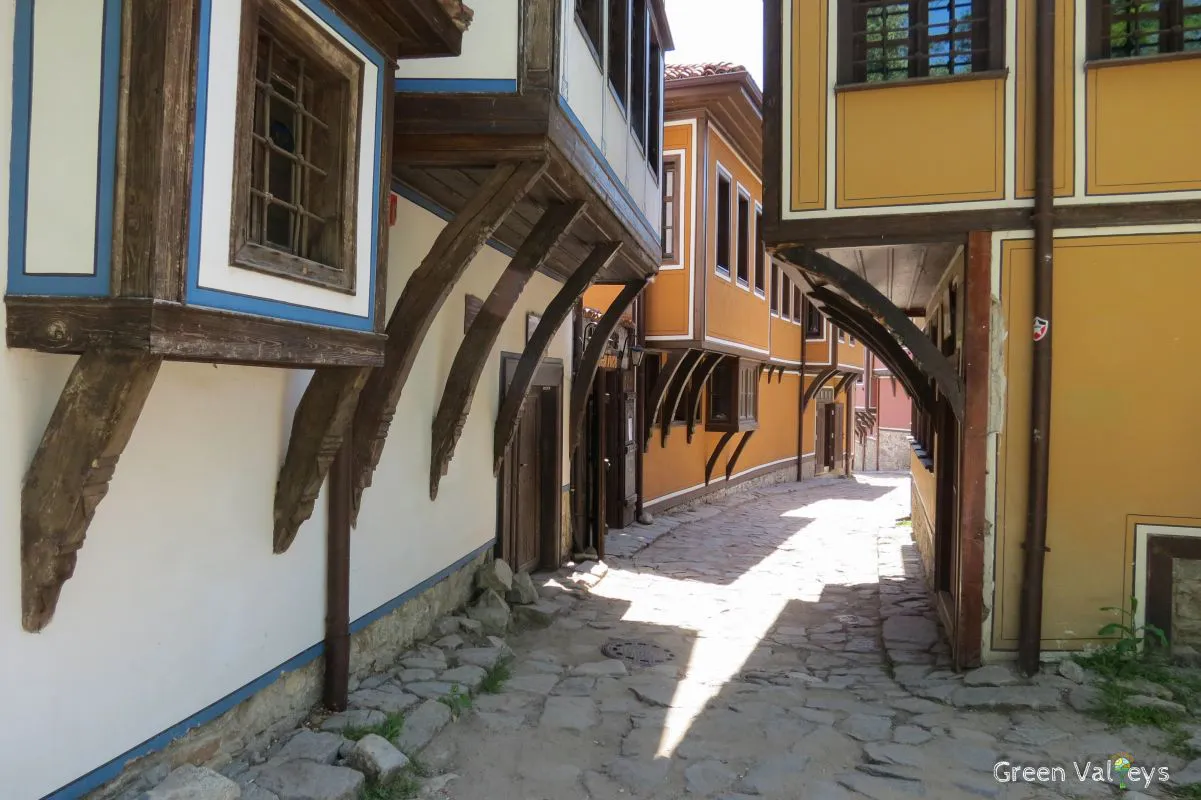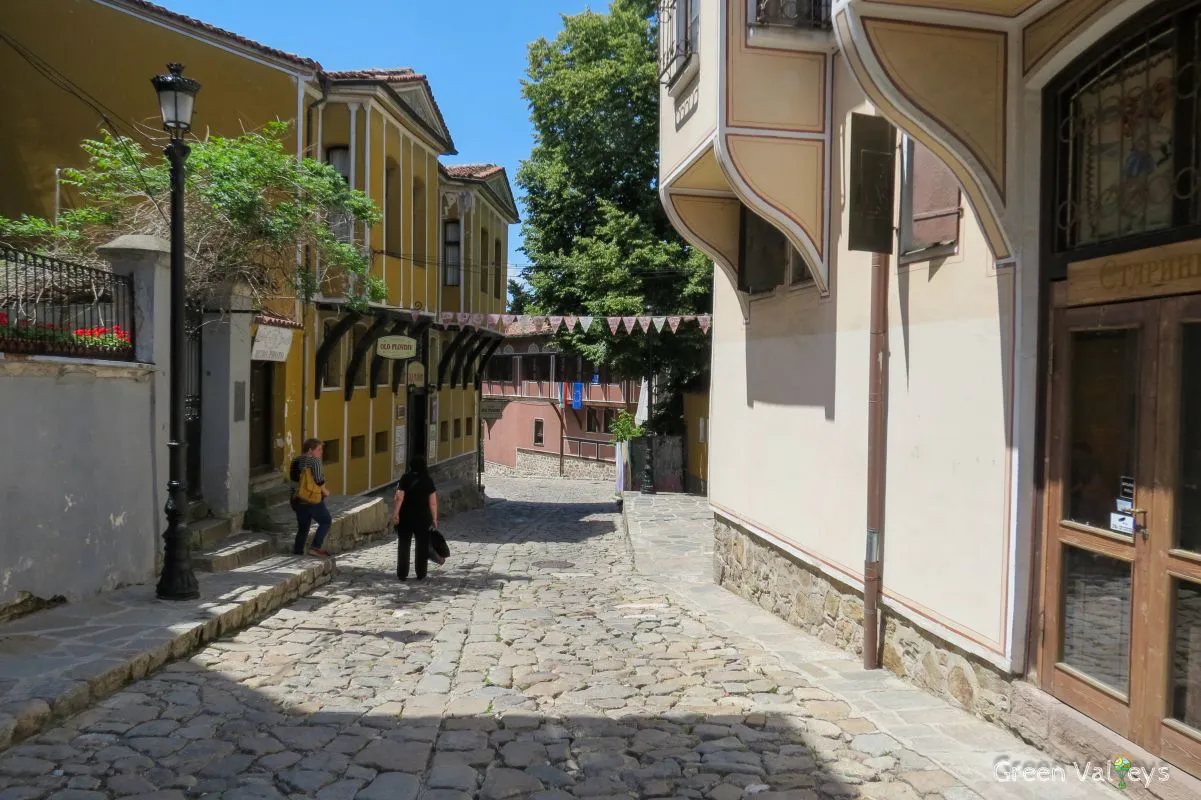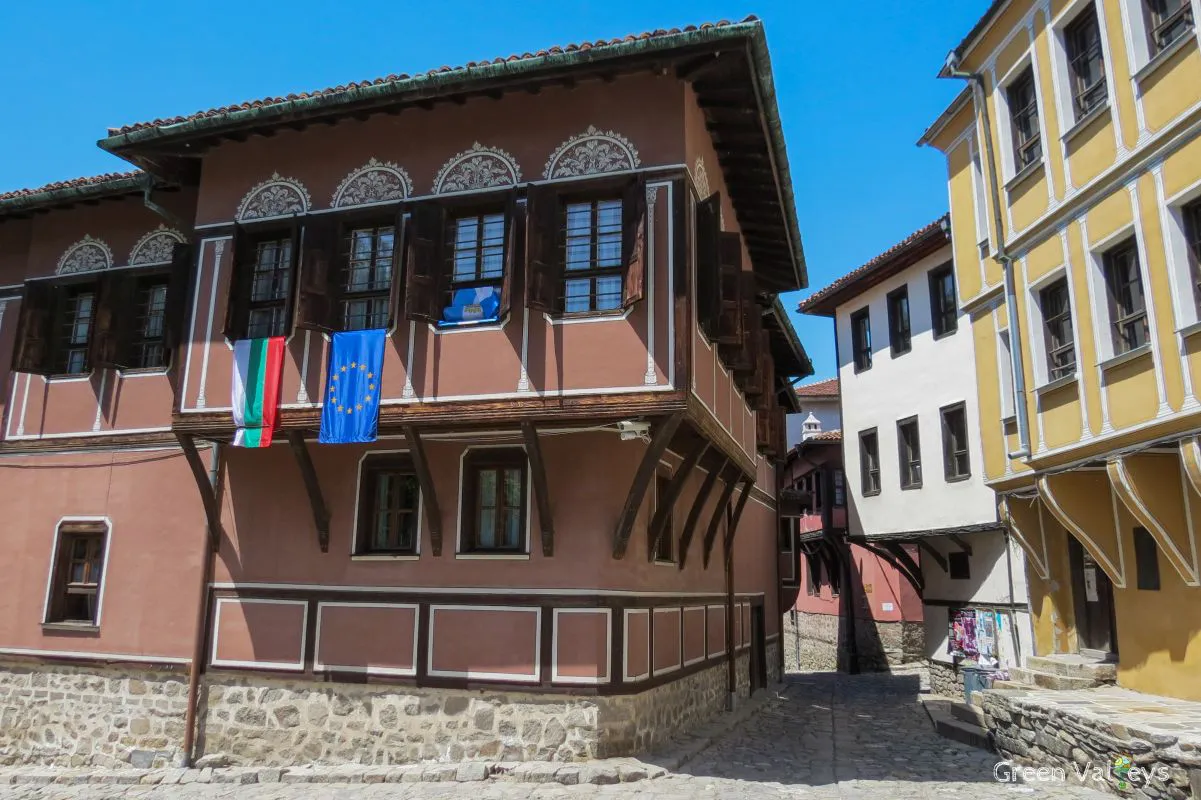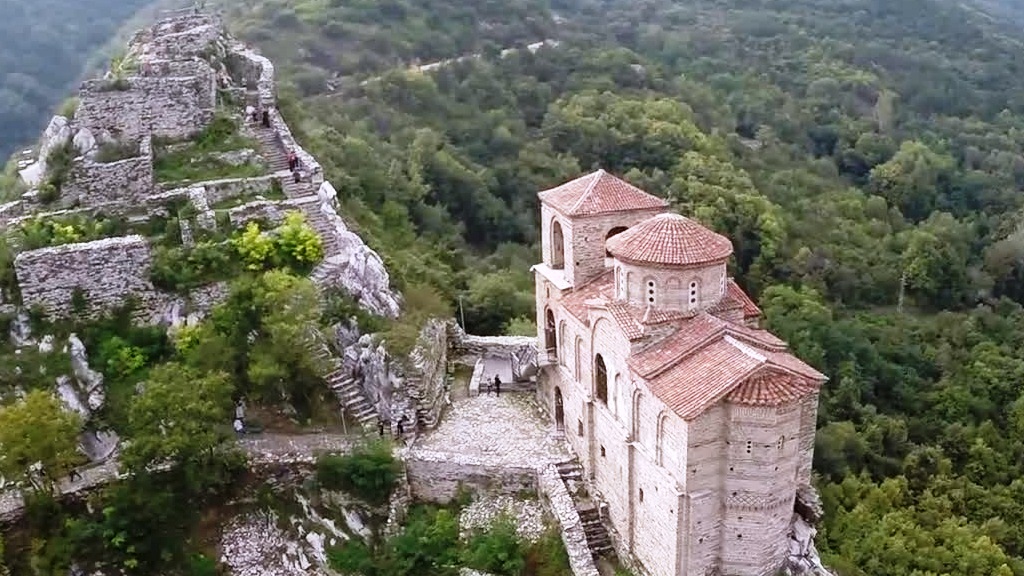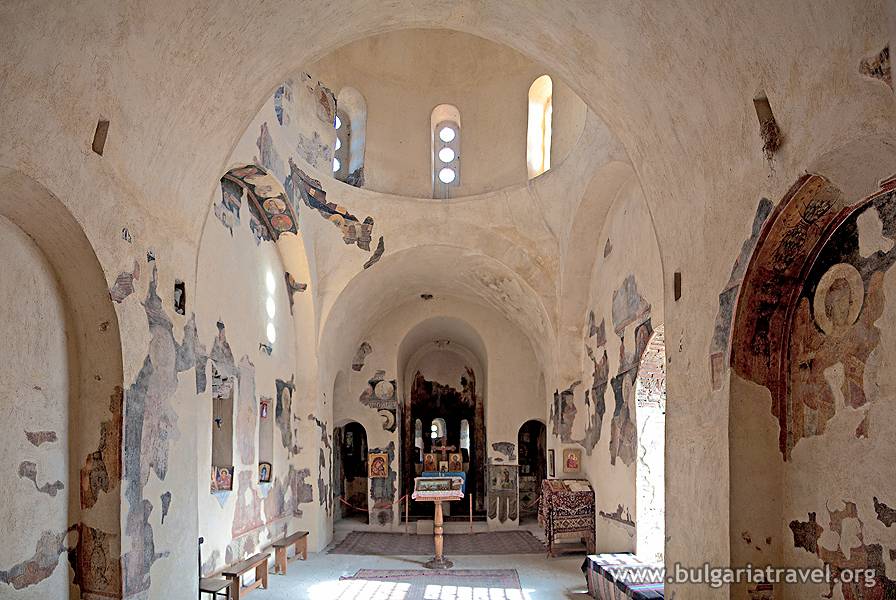City of Plovdiv(Philippopolis), Vacha dam and Bachkovo monastery
Tour schedule:
From 146 BGN
Tour Details
City of Plovdiv(Philippopolis), Vacha dam and Bachkovo monastery. Get to know Plovdiv. One of the oldest cities in an Europe, the beginning of it’s history dates back to 6,000 years B.C.
In ancient times Thracians inhabited the Three Hills and built a fortified settlement – the largest city in Thrace. As a matter of fact in the 4th century BC Plovdiv was conquered by Phillip of Macedon.
Asen’s Fortress, a medieval fortress in the Rhodope Mountains controlled by the Thracians, Romans, Byzantines, Crusaders, Ottomans and Bulgarians.
Bachkovo Monastery “Assumption of the Virgin” is located in the southern part of the village Bachkovo.
You will explorer famous Bulgarian icon painter Zahariy Zograf (1810-1853). Executed the images in the church’s interior from 1838-1840. In 1841 he completed the frescoes on the exterior of The Holy Archangels Church.
Vacha dam. It is an amazingly beautiful dam located in the middle of the Rhodopes along the river Vacha. The highest dam wall in Bulgaria was built on “Vacha” – with a height of 144.5 meters. A wide variety of fish thrives in the reservoir – carp, perch, carp, grass carp, bream, whitefish, baboon, mullet, bream, catfish, walleye, sunfish, redfin and pike. Thanks to this variety, it is a very popular fishing spot.
Prices (Full day tour):
2 x Participants: € 115 p.p (225 BGN p.p)
4 x Participants: € 95 p.p (186 BGN p.p)
6 x Participants: € 85 p.p (166 BGN p.p)
8 x Participants: € 75 p.p (146 BGN p.p)
Highlights:
∗ Our team will be waiting to greet you at the parking behind Alexander Nevski Cathedral, http://!!!Green Valleys meeting point SOFIA google/maps!!! , or you can arrange your pick up point in advance with member of our booking team.
∗ Discover Plovdiv one of the oldest towns in Europe. There is evidence of habitation in Plovdiv dating back to the 6th millennium BCE. Our guides will share their wealth of information about the area with you.
∗ Vacha dam. It is an amazingly beautiful dam located in the middle of the Rhodopes along the river Vacha
∗ Lunch in a traditional country restaurant while enjoying deliciously prepared food and lovely atmosphere.
∗ Explore the ancient Asen’s Fortress, a medieval fortress in the Rhodope Mountains controlled by the Thracians, Romans, Byzantines, Crusaders, Ottomans and Bulgarians.
∗ Learn about the history of Bulgarian culture by vising the Bachkovo Monastery of the Dormition of the Theotokos , fantastic place.
∗ Departing back to the town of Sofia.
In case of medical issues or allergies you should always consult your tour representative if you are not sure of what ingredients a dish contains.
Places You’ll See
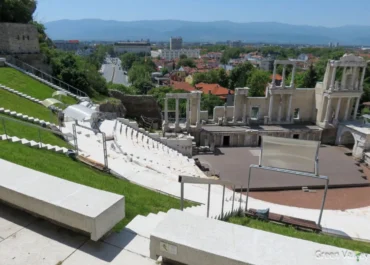
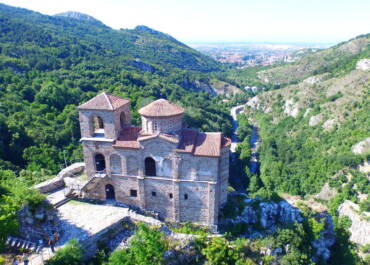
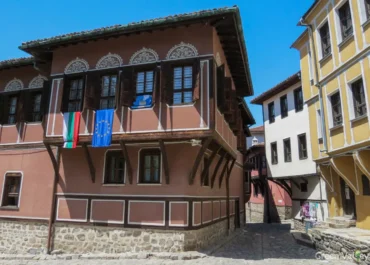
Tour Interary:
Day Tour
∗ 08:30 – 09:00: Tour starts from the parking behind Alexander Nevski Cathedral or at your preferable location if requested in advance at the time of booking. The trip to Plovdiv lasts about two and a half hours through beautiful countryside.
∗ 11:00 – 13:00: Visit Plovdiv, sightseeing tour. Plovdiv is the second – largest city of Bulgaria. One of the oldest cities in Europe – the beginning of the history dates back to 6,000 years BC. In ancient times Thracians inhabited the Three Hills and built a fortified settlement – the largest city in Thrace. During the 4th century BC, Plovdiv was conquered by Phillip of Macedonia. The sightseeing tour includes:
– Ancient Forum and the Odeon.
– Ancient Roman Stadium.
– Archaeological and historical complex of Old town of Plovdiv.
– Ancient theatre.
– Plovdiv Regional Ethnographic Museum.
– Archaeological complex on the Nebet Tepe (one of the hills of Plovdiv) The earliest settlements on Nebet Tepe are dated back to 4000 BC
– Kapana District-Craft street.
∗ Vacha dam. It is an amazingly beautiful dam located in the middle of the Rhodopes along the river Vacha
∗ 14:00 – 15:00: Lunch and relax in a traditional restaurant while enjoying deliciously prepared food and lovely atmosphere.
∗ 15:00 – 16:00: Walk around the ancient Asen’s Fortress, a medieval fortress in the Rhodope Mountains controlled by the Thracians, Romans, Byzantines, Crusaders, Ottomans and Bulgarians. Asen’s Fortress is also the most notable examples of Medieval Christian architecture with frescoes dating back to the 13th century. The church is one of the oldest in all of Eastern Orthodoxy and has a tower once used as a belfry and watchtower.
∗ 16:30 – 17:30: Visit to the Bachkovo Monastery of the Dormition of the Theotokos, where you will learn about the Bulgarian history. You will learn about the creativity of Zahary Zograf (1810-1853), a famous Bulgarian painter of the Bulgarian National Revival, noted for his church mural paintings and icons and often regarded as the founder of secular art in Bulgaria due to the introduction of everyday life elements in his work.
∗ 17:30: Boarding the coach and departing to the capital of Bulgaria, Sofia City.
∗ 19:00: Expected time of arrival in Sofia at the parking lot behind Alexander Nevsky Cathedral or at your preferable location if requested in advance at the time of booking.
We miss you already-Hope that will see you again.
See you.
Pick up/ Drop off points:
Our team will be waiting to greet you at the parking behind Alexander Nevski Cathedral, http://!!!Green Valleys meeting point SOFIA google/maps!!!, or you can arranged your Pick up point in advance with member of our booking team.
Please arrive 15 minutes before your scheduled departure time for boarding.
Plovdiv
As we enjoy a scenic journey to Plovdiv (Old name Philipopolis named after Philip of Macedon), your expert storytelling guide for the day will provide you with an overview of the history of the city and its most famous sights.
Discover one of the oldest cities in Europe – the beginning of its history dates back to 6,000 years BC.
In ancient times Thracians inhabited the city . In the 4th century BC Plovdiv was conquered by Phillip of Macedon .During the period of the Roman Empire, Plovdiv (at those times – Trimontium) was an important regional center. Numerous well-preserved artifacts had remained from those times, such as cobble stoned streets, fortress walls, buildings, water supply and sewerage systems.
Plovdiv The Roman forum.
Plovdiv Roman Stadium.
Archaeological and historical complex of Old town of Plovdiv.
Ancient theater.
Plovdiv Regional Ethnographic Museum.
Archaeological complex On Nebet hill (12th century BC grew to the Thraciancity of Eumolpias).
Kapana District-Craft street.
And much more to be share by our professional storytelling guide.
Vacha dam. It is an amazingly beautiful dam located in the middle of the Rhodopes along the river Vacha. The highest dam wall in Bulgaria was built on “Vacha” – with a height of 144.5 meters. A wide variety of fish thrives in the reservoir – carp, perch, carp, grass carp, bream, whitefish, baboon, mullet, bream, catfish, walleye, sunfish, redfin and pike. Thanks to this variety, it is a very popular fishing spot.
The Bachkovo Monastery “Assumption of the Virgin”
You will discover famous Bulgarian icon painter Zahariy Zograf (1810-1853), executed the images in the church’s interior from 1838-1840, and in 1841 he completed the frescoes on the exterior of The Holy Archangels Church.
In the cathedral there is an icon from 1311 known as The Holy Mother of God Icon, with a silver repousse cover. This icon is believed to have miraculous powers.
Visitors to monastery may also view other icons, silver repousse covers for copies of the Gospels, and other works of art from the 16th to the 19th centuries.
Asens Fortress
Asen’s Fortress is The Church of the Holy Mother of God of Asenovata Krepost near Asenovgrad, Bulgaria a fortress of one of Bulgaria’s most famous kings, Ivan Asen II. It is still in regular use as a Bulgarian Orthodox church.
Take a journey to the Asens Fortress controlled by Thracian,Romans,Byzantines,Crusaders,Ottomans and Bulgarians.
With drops that are almost vertical and at times even overhanging above the river below, it is impregnable on three sides. Its strategic location and natural defenses explain why it has been used since the days of the Thracian, who fortified it in the 5th century BCE.
Asen Fortress is also the most notable examples of Medieval Christian architecture with frescoes dating to the 13th century. The church is one of the oldest in all of Eastern Orthodoxy, and has a tower once used as a belfry and watchtower. Our professional storytelling guide has so much to share with you.
Food:
Our guests can choose between different diet menu, including vegetarian, Jain or non-vegetarian meals (Halal will not always be available).
Guests should advise the tour representative of their preferred diet on day one. You should always consult member of our staff if you have any alergy to the ingredients of the dishs or you not sure of what ingredients a dish contains.
Why to choose us:
(pre arrangement required)
(pre arrangement required)
Price included:
Prices (Full day tour):
2 x Participants: € 115 p.p (225 BGN p.p)
4 x Participants: € 95 p.p (186 BGN p.p)
6 x Participants: € 85 p.p (166 BGN p.p)
8 x Participants: € 75 p.p (146 BGN p.p)
∗ Visit to the Vacha dam.
∗ Visit to the Bachkovo Monastery.
∗ Profesional guide and driver included.
Price excluded:
∗ Personal expenses.
∗ Entrance to all Attractions and Museums.


